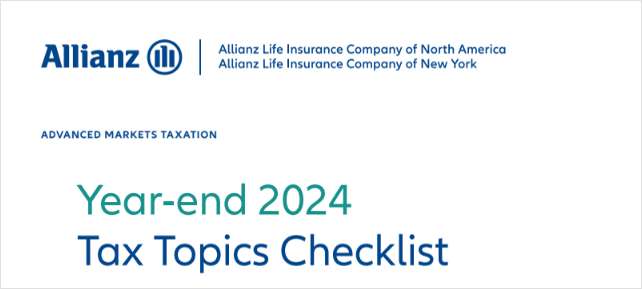
Conducting an end-of-year retirement plan checkup is important every year, but some of the changes ushered in by the 2017 tax reform legislation make performing this routine evaluation even more important now that we're quickly approaching the end of 2018.
While many basic retirement plan rules were left unchanged by the new law, in some circumstances its provisions can have both a direct and an indirect impact on many retirement-related issues. To maximize the potential tax benefits under tax reform, each client's year-end retirement planning checkup for 2018 should include a discussion of the changes brought about by the new law, and how those changes could influence the client's retirement planning strategy for the year.
2018 End-of-Year Checkup
Clients who are still working should be advised that maxing out pre-tax contributions to retirement plans continues to be important for 2018—in fact, with the reduction in tax rates, large pre-tax contributions can even help clients drop into a lower tax bracket, and can help small business clients qualify for the new Section 199A pass-through deduction for qualified business income. The pre-tax contribution caps remain the same for 2018–$18,500 for 401(k)s and $5,500 for IRAs, with an additional catch-up contribution of $6,000 or $1,000 for those aged 50 and up.
Clients who have reached age 70 ½ should be reminded of their required minimum distributions (RMDs) for 2018. While the RMD rules remained unchanged—clients are required to take their distribution by December 31, or April 1 if they turned 70 ½ in 2018—tax reform did impact some issues surrounding RMDs.
Clients who have just turned 70 ½ should estimate their new tax rate in determining whether it might be more advantageous to take their first RMD in 2018 (which would increase taxable income) or in 2019 (which would mean that they are required to take two RMDs in a single tax year).
Clients who typically give to charity each year might consider whether it would make more sense from a tax perspective to execute a qualified charitable distribution (QCD). Because fewer clients will itemize deductions given tax reform's expansion of the standard deduction and limitation of several important itemized deductions, giving to charity in the traditional way will not generate any tax benefit in many cases. Clients who are already required to take RMDs might benefit from directing a portion of their RMD directly to charity, which would exclude the amount from the year's taxable income entirely.



